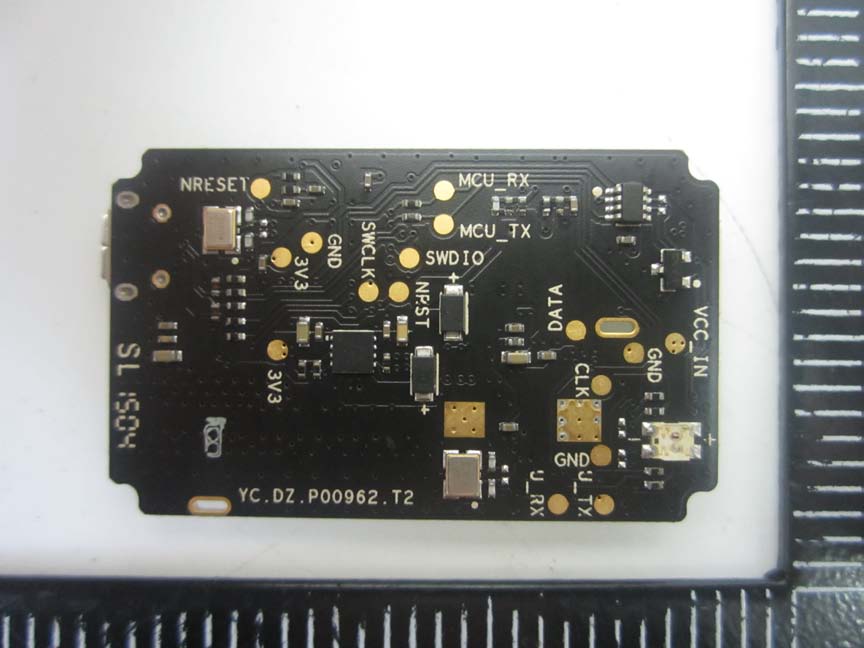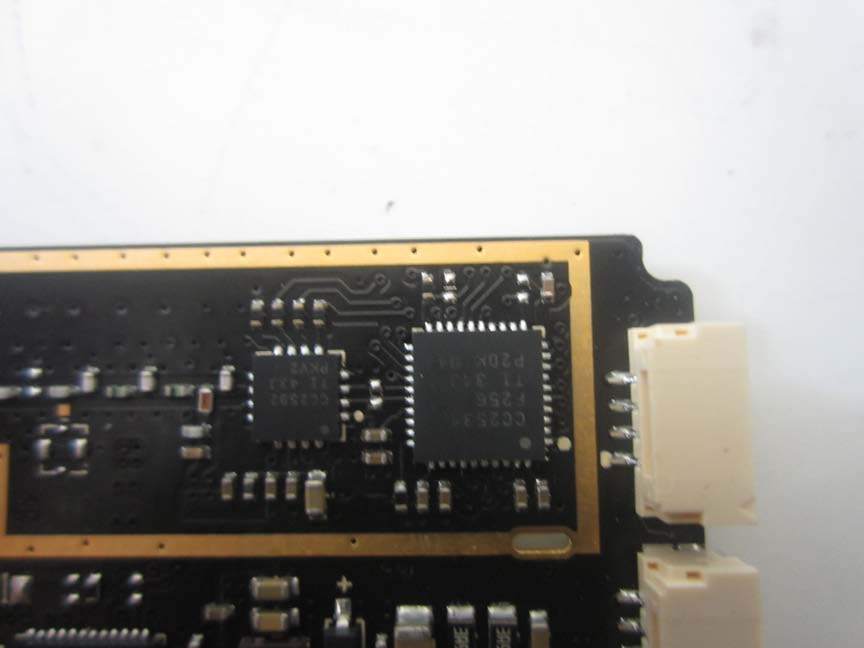Introduction
DJI has long been a trusted name in the world of professional videography and cinematic drone technology. Their Thumb Controller (Model V1.0), designed specifically for the DJI Ronin series handheld gimbals, exemplifies DJI’s commitment to intuitive design and robust functionality. With the FCC certification under ID SS3-800RX1504, DJI assures users that this device meets stringent electromagnetic interference standards, making it fully compliant and legal for sale and use within the United States.
Primarily targeted at professional and semi-professional filmmakers, videographers, and content creators, the DJI Thumb Controller delivers precise, wireless control over pan, tilt, and roll motions using a pressure-sensitive stick and an easy-to-read OLED display. This article delves deeply into the controller’s key specifications, operating frequencies, internal component architecture, and regulatory details based on its FCC filing. Whether you’re a filmmaker looking to upgrade your gimbal experience or a tech enthusiast intrigued by internal hardware, this teardown and analysis provides comprehensive insights into DJI’s Thumb Controller.
Key Features & Specifications
The DJI Thumb Controller (FCC ID SS3-800RX1504) stands out due to its thoughtfully designed features tailored for precision control and ease of use:
Key Features:
- External Receiver Compatibility: Seamless integration specifically designed for DJI Ronin gimbals.
- Pressure-Sensitive Control Stick: Provides intuitive and precise control over gimbal movements.
- Easy-to-read OLED Display: Clearly displays menus, settings, and operational status.
- Quick-release Accessory Mount: Allows for rapid attachment and removal from your setup.
- Internal Receiver Preinstalled (Ronin-M): Ready-to-use integration with Ronin-M models.
- Override Button: Reactivation capability after a failed firmware update.
- Micro-USB Port: Enables easy charging and firmware updates.
Technical Specifications:
- OLED Display: Clearly presents menu navigation and device settings.
- Pressure-Sensitive Stick: Converts user input into precise gimbal movements via integrated sensors.
- External Receiver CAN Port: Facilitates communication between receiver and Ronin gimbals.
- Power Button: Simple press-and-hold operation for device power control.
- Status Indicator LEDs: Visually indicate connection status and firmware update progress.
- Bluetooth: Equipped with Bluetooth capability (specific version details not available).
Operating Frequencies
The DJI Thumb Controller operates within the following frequency parameters as per FCC documentation:
| Frequency Range (GHz) | Output Power (mW) | FCC Rule Part |
|---|---|---|
| 2.415 – 2.454 | 5 | 15CCC2.1 |
Understanding these frequencies is essential for recognizing the controller’s RF capabilities, ensuring optimal performance within common Bluetooth and Wi-Fi bands, and confirming regulatory compliance.
Technology Deep Dive
The DJI Thumb Controller primarily leverages Bluetooth technology for wireless communication, as indicated by its operational frequency range (2.4 GHz band). Bluetooth connectivity ensures stable, interference-resistant communication ideal for short-range remote control applications such as gimbal operations. Its low output power (5 mW) strikes a balance between effective range, minimal interference with other devices, and low power consumption, resulting in extended battery life. The absence of detailed Wi-Fi specifications suggests that Bluetooth is the primary wireless technology employed, providing reliable, responsive control suitable for professional filming environments.
In-Depth Internal Component Analysis / Teardown
The internal PCB design features a straightforward, functional layout. Key integrated circuits (ICs) are likely microcontrollers (MCUs), as indicated by the clearly labeled MCU_RX and MCU_TX pads, suggesting serial communication capabilities. Debugging and testing friendliness is evident from multiple labeled test points (e.g., GND, 3V3, NRST). The presence of capacitors and likely voltage regulators indicates onboard power management designed to step down and stabilize voltage at 3.3V, essential for reliable MCU operation. The absence of visible antennas suggests wireless communication modules could be located elsewhere or externally connected.

A closer inspection reveals a sophisticated multi-layer PCB with clear signs of RF optimization, including impedance-controlled differential pairs and copper ground pours. A PCB trace antenna connected via a U.FL connector highlights modularity and ease of antenna replacement or testing. The board hosts a micro USB port for charging and data transfer, along with flexible flat cable connectors, enhancing its modular integration capabilities. Overall, meticulous layout choices underscore DJI’s commitment to RF performance and robust design.

The controller’s main PCB exhibits a high-quality multi-layer design, indicated by numerous vias and compact routing strategies. The central IC, likely a microcontroller or SoC, dominates the board, facilitating core processing tasks. A clearly visible PCB trace antenna supports Bluetooth connectivity, ensuring reliable short-range wireless communication. Additional connectors and a crystal oscillator demonstrate thoughtful integration for external interfacing and precise timing control.

Another PCB section appears dedicated to interfacing and debugging purposes, with labeled pads like MCU_RX, MCU_TX, SWDIO, and SWCLK, indicating Serial Wire Debug capabilities. The sparse component population on this board suggests its primary function is to facilitate communication and debugging rather than processing or power management. This modular approach simplifies maintenance and troubleshooting.

Lastly, a specialized PCB section showcases two prominent ICs, one marked ‘C0253’—likely a microcontroller or communication IC—and another labeled ‘FAN’, possibly a power management or amplifier IC. The use of ENIG PCB finish hints at DJI’s focus on durability and signal integrity. The presence of compact connectors further emphasizes the device’s modular design philosophy and integration flexibility, essential for professional-grade applications.

Regulatory Insights & FCC Filing
The DJI Thumb Controller (FCC ID SS3-800RX1504) complies fully with FCC electromagnetic interference standards, making it legally marketable within the US. FCC documentation typically includes critical data like RF exposure reports, EMC test results, internal and external photos, user manuals, schematics, and block diagrams. According to the provided user manuals, this controller is optimized specifically for DJI Ronin gimbals, allowing intuitive control over pan, tilt, roll axes, adjustable SmoothTrack settings, calibration, auto-tune features, and firmware updates via DJI Assistant software.
Potential Use Cases & Target Audience
- Professional Videographers: Ideal for cinematographers needing precise, real-time control of camera movements during complex filming scenarios, enhancing creativity and workflow efficiency.
- Content Creators & YouTubers: Simplifies solo operation of Ronin gimbals, allowing creators to produce smooth, professional-quality videos without additional crew.
- Event Filmmakers: Streamlines filming dynamic events such as weddings or live performances, enabling rapid, intuitive adjustments to capture fleeting moments perfectly.
Conclusion
The DJI Thumb Controller (Model V1.0, FCC ID SS3-800RX1504) represents a thoughtfully engineered, rigorously tested accessory tailored for professional DJI Ronin users. Its intuitive pressure-sensitive stick, clear OLED interface, and robust internal design underscore DJI’s commitment to quality and usability. Certified compliant by the FCC, this device offers filmmakers reliable wireless control with the assurance of regulatory adherence, making it a valuable tool in professional videography and content creation workflows.